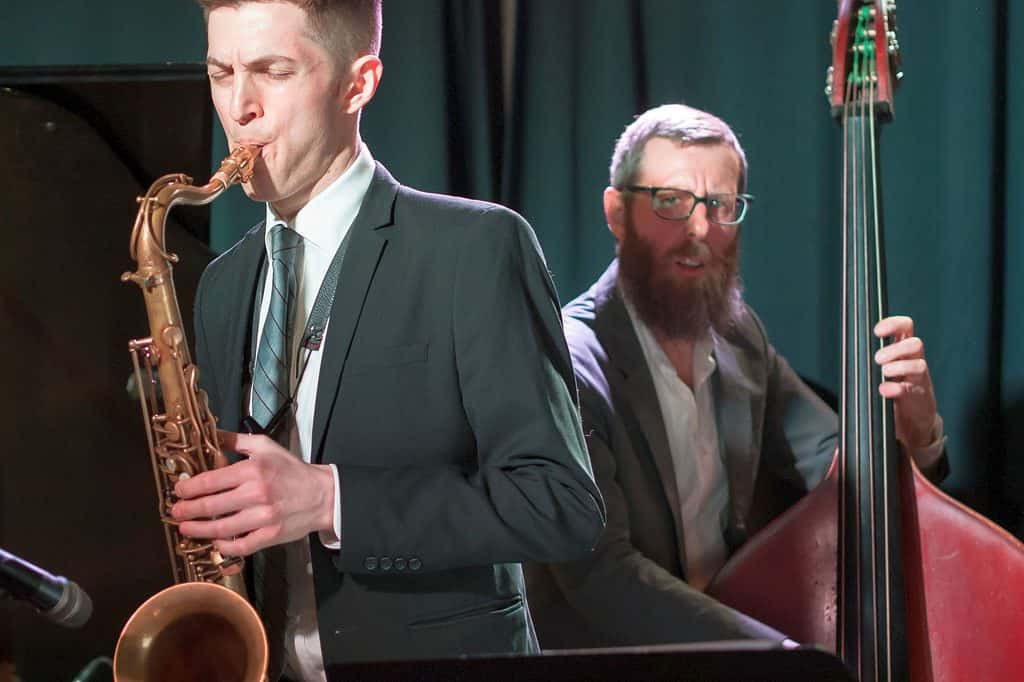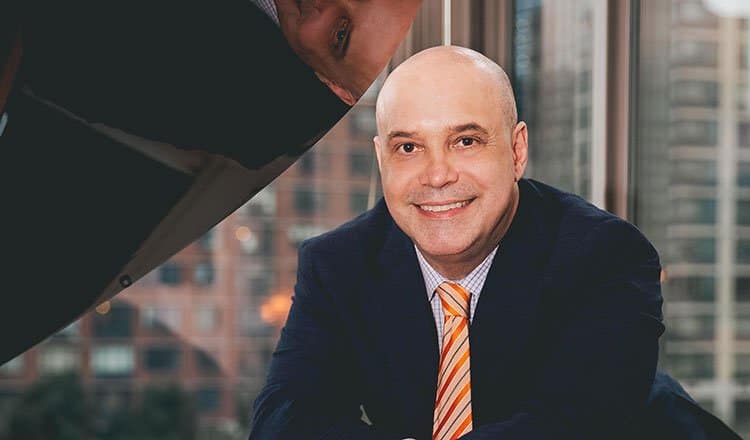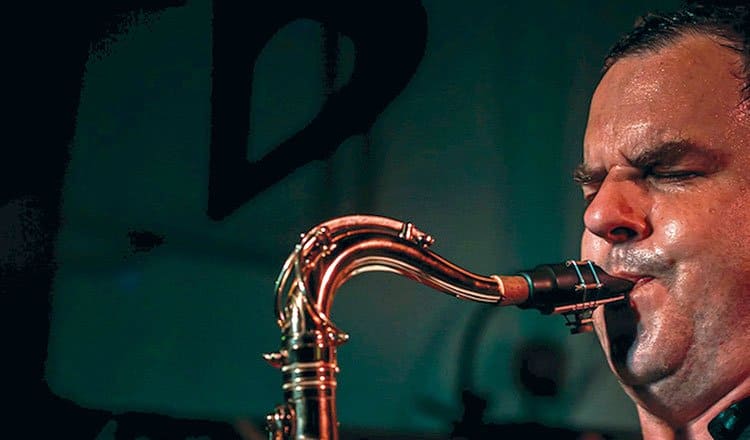It’s not surprising that Darren Sigesmund blends the occasional food analogy into a conversation about music.
The 42-year-old jazz musician is not only a trombonist, bandleader and composer. He’s also a professional chef.
And he sees a clear connection between music and cuisine.
“The general principles, I think, are very similar,” he says.
“You have to have some kind of balance and texture and coherence to what you’re doing. And clarity. So, yeah, I think there is some crossover there, for sure.”
Just as a chef will build around a few main ingredients, Sigesmund’s starting-point as a composer is melody, but the ingredient of rhythm is equally important.
“Sometimes I might come up with an initial idea for a melody when I’m cooking,” he says. “But also with cooking there’s rhythm, right? As I gain proficiency, there definitely is a rhythm going on.”
If that rhythm gets upset, things can easily go amok.
“If I’m in the restaurant and someone asks me a question, I can barely respond, because I’m so focused on the rhythm of the food. It sounds crazy, but it’s true.”
The Darren Sigesmund Sextet will open this season’s Jazz on the Wing series with a menu rich in musical flavours from such sources as Cuba, Brazil and the Balkans.
It’s a blend that has earned the Toronto group international acclaim, with five European tours alone in the past couple of years, as well as performances in Asia and Australia.
Last year, the second CD in the ensemble’s Strands project earned a Juno nomination for best traditional jazz album. One of its tunes, “Dance for Leila” won the Galaxie Rising Star award for best composition at the 2010 Montreal Jazz Festival.
Sigesmund has already written several numbers for a third CD, which he hopes to release next spring.
“I’m a slow writer, but one by one it’s getting there.”
Three of those new tunes will be featured at the sextet’s concert at the Yukon Arts Centre on September 25.
As for his chosen instrument, Sigesmund says he began playing trombone by “process of elimination”.
By Grade 7, he had been playing piano for three years – and also composing.
“I didn’t have a clue what I was doing, but I was always intrigued by it, and it’s remained a really important part of my musical persona.”
When he had the chance to take up a new instrument in school, he opted for the double-bass, but the strings teacher told him he lacked the grip for it. When she tried to interest him in the viola, he rebelled and walked across to the band room instead.
With two sisters who played saxophone and brother who played trumpet, he wanted something different. So he picked up the trombone.
While it’s not that common for trombonists to become bandleaders, Sigesmund paid close attention to the work of such trombone legends as Glenn Miller, Tommy Dorsey and Jack Teagarden, as well as more contemporary artists, including several of the “new young guys’ from Europe.
It’s vital, he believes, to “check the tradition” in either performance or composition.
“Even though I might write my own music and I might be more contemporary, I feel like the more I want to move ahead, the more I have to look backwards. The history is so rich,” he says.
“It’s good to be aware of what’s going on in your own community, what’s going on this year, what are the new sounds coming out of different bands. But you have to have a historical foundation, both playing-wise on an instrument and composing-wise.”
Sigesmund is quick to acknowledge his mentors, both as a chef and as a composer.
His cooking mentor, Michael Stadtlander, is rooted in cooking seasonally, using organic food he grows himself at his Eigensinn Farm north of Toronto.
“It’s very sophisticated food, but it’s also clear. Beautiful colours and balance.”
Balance is important to Sigesmund in both his professional pursuits.
“If you’re making a stew or a soup, you can’t necessarily taste individual flavours. They’re not as prominent. They’re subtle, but they’re there and they create this new kind of result, or sound, or colour,” he says.
From his composition teacher, Frank Falco – also a food lover given to using food analogies to make a musical point – Sigesmund learned how to expand beyond the melodic base to turn a “small appetizer” into a meal.
“I would learn from him ways of developing initial ideas, so that maybe what is in the middle or the end of the piece isn’t so much unrelated,” he says.
Rather than putting “10,000 things on a plate” that have no relationship, Sigesmund would rather use a few things and expand on the basic themes.
“That’s what Michael is good at. He doesn’t put so many things on a plate that you can’t remember what you ate. It’s sophisticated, but it’s a bit more simple. And you’ll remember what you ate.”
Joining the composer-chef to present Sunday’s musical repast will be vocalist Eliana Cuerva, pianist Brad Turner, saxophonist Phil Dwyer, bassist Ken Lister and drummer Jesse Cahill.
Performance time is 7:30 pm.




